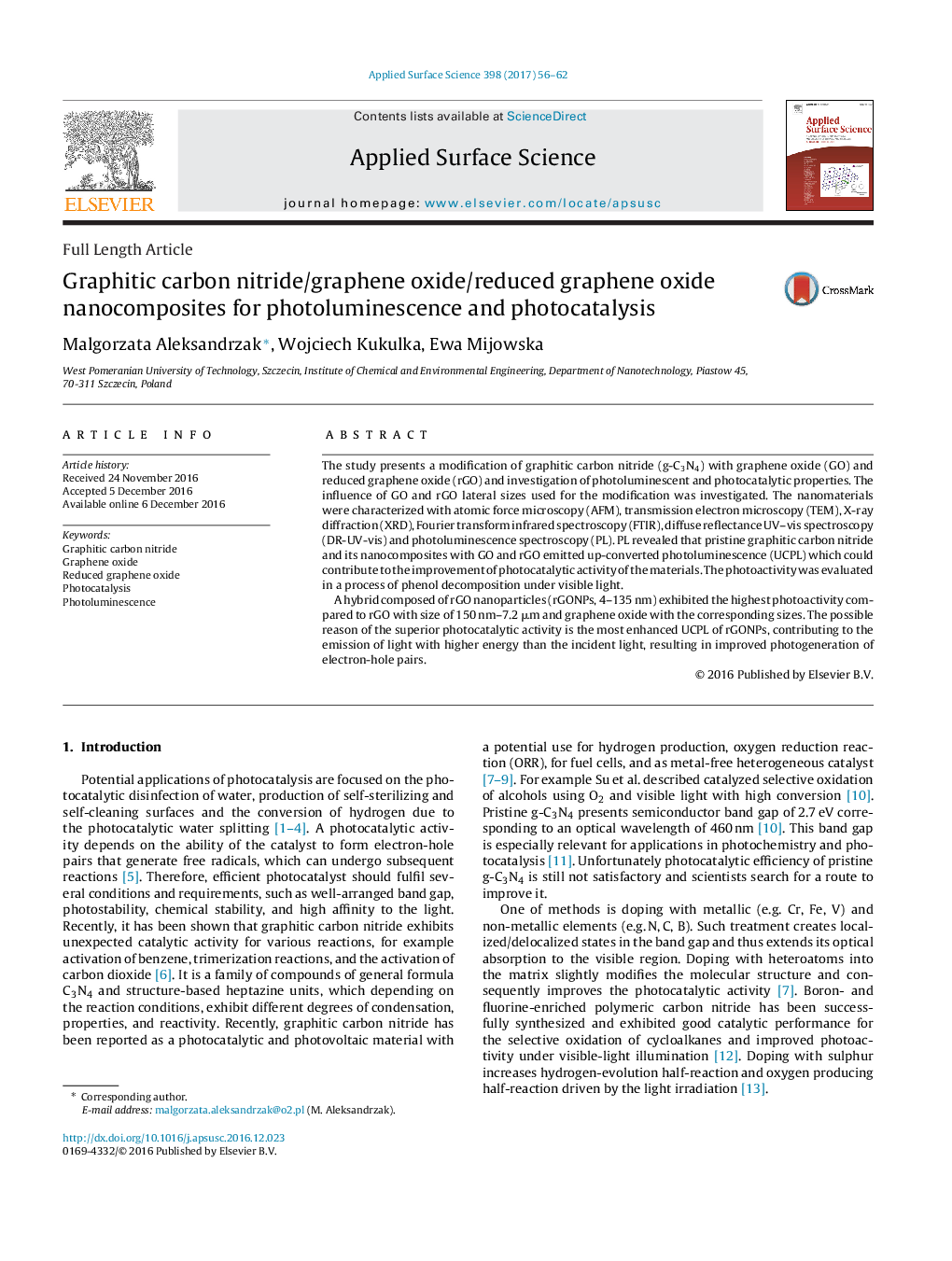| Article ID | Journal | Published Year | Pages | File Type |
|---|---|---|---|---|
| 5351266 | Applied Surface Science | 2017 | 7 Pages |
â¢Graphitic carbon nitride modified with graphene nanostructures.â¢Influence of graphene nanostructures size in photocatalytic properties of g-C3N4.â¢Improved photocatalysis resulted from up-converted photoluminescence.
The study presents a modification of graphitic carbon nitride (g-C3N4) with graphene oxide (GO) and reduced graphene oxide (rGO) and investigation of photoluminescent and photocatalytic properties. The influence of GO and rGO lateral sizes used for the modification was investigated. The nanomaterials were characterized with atomic force microscopy (AFM), transmission electron microscopy (TEM), X-ray diffraction (XRD), Fourier transform infrared spectroscopy (FTIR), diffuse reflectance UV-vis spectroscopy (DR-UV-vis) and photoluminescence spectroscopy (PL). PL revealed that pristine graphitic carbon nitride and its nanocomposites with GO and rGO emitted up-converted photoluminescence (UCPL) which could contribute to the improvement of photocatalytic activity of the materials. The photoactivity was evaluated in a process of phenol decomposition under visible light.A hybrid composed of rGO nanoparticles (rGONPs, 4-135 nm) exhibited the highest photoactivity compared to rGO with size of 150 nm-7.2 μm and graphene oxide with the corresponding sizes. The possible reason of the superior photocatalytic activity is the most enhanced UCPL of rGONPs, contributing to the emission of light with higher energy than the incident light, resulting in improved photogeneration of electron-hole pairs.
Graphical abstractDownload high-res image (140KB)Download full-size image
